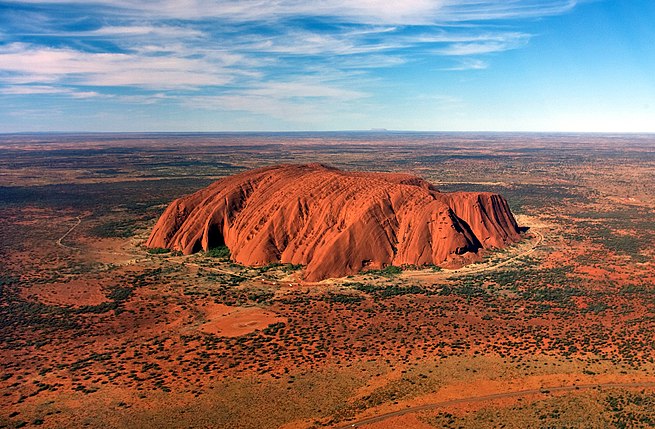Main Difference
The main difference between Monolith and Megalith is that the Monolith is a stone block made of one single piece; object made of one single rock piece and Megalith is a large stone used to build a structure or monument.
-
Monolith
A monolith is a geological feature consisting of a single massive stone or rock, such as some mountains, or a single large piece of rock placed as, or within, a monument or building. Erosion usually exposes the geological formations, which are often made of very hard and solid igneous or metamorphic rock.
In architecture, the term has considerable overlap with megalith, which is normally used for prehistory, and may be used in the contexts of rock-cut architecture that remains attached to solid rock, as in monolithic church, or for exceptionally large stones such as obelisks, statues, monolithic columns or large architraves, that may have been moved a considerable distance after quarrying. It may also be used of large glacial erratics moved by natural forces.
The word derives, via the Latin monolithus, from the Ancient Greek word μονόλιθος (monolithos), from μόνος (“one” or “single”) and λίθος (“stone”).
-
Megalith
A megalith is a large stone that has been used to construct a structure or monument, either alone or together with other stones. The word “megalithic” describes structures made of such large stones without the use of mortar or concrete, representing periods of prehistory characterised by such constructions. For later periods, the term monolith, with an overlapping meaning, is more likely to be used.
The word “megalith” comes from the Ancient Greek “μέγας” (transl. mégas meaning “great”) and “λίθος” (transl. líthos meaning “stone”). Megalith also denotes an item consisting of rock(s) hewn in definite shapes for special purposes. It has been used to describe buildings built by people from many parts of the world living in many different periods. A variety of large stones are seen as megaliths, with the most widely known megaliths not being sepulchral. The construction of these structures took place mainly in the Neolithic (though earlier Mesolithic examples are known) and continued into the Chalcolithic and Bronze Age.
-
Monolith (noun)
A large single block of stone, used in architecture and sculpture.
-
Monolith (noun)
Anything massive, uniform and unmovable.
-
Monolith (noun)
A continuous cast as a homogeneous column in a single piece.
-
Megalith (noun)
A construction involving one or several roughly hewn stone slabs of great size.
-
Megalith (noun)
A large stone used in such a construction.
-
Monolith (noun)
a large single upright block of stone, especially one shaped into or serving as a pillar or monument
“we passed Stonehenge, the strange stone monoliths silhouetted against the horizon”
-
Monolith (noun)
a very large and characterless building
“the 72-storey monolith overlooking the waterfront”
-
Monolith (noun)
a large block of concrete sunk in water, e.g. in the building of a dock.
-
Monolith (noun)
a large, impersonal political, corporate, or social structure regarded as indivisible and slow to change
“independent voices have been crowded out by the media monoliths”
-
Megalith (noun)
a large stone that forms a prehistoric monument (e.g. a standing stone) or part of one (e.g. a stone circle)
“a smaller circle of some forty ancient megaliths”

